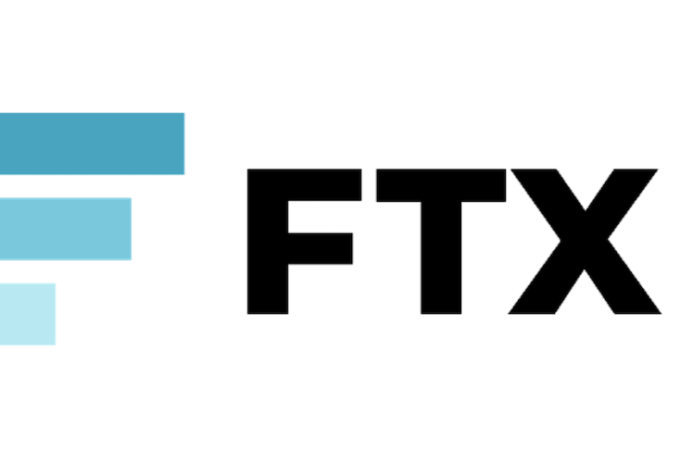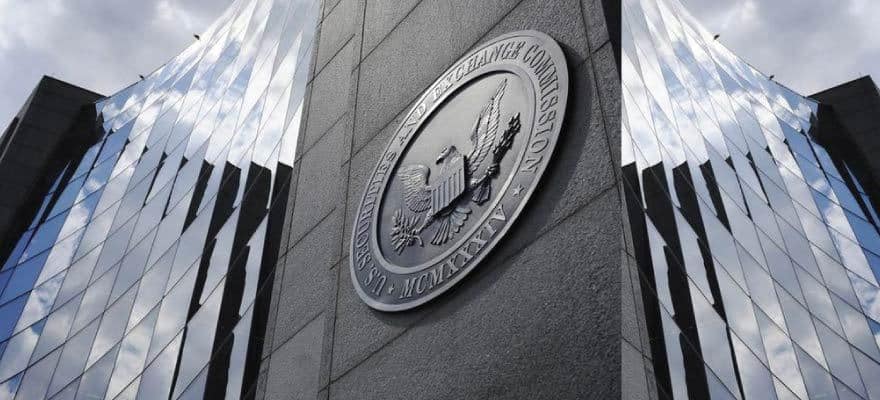
Blockchain will usher in the era of decentralised computing
By Bruce Pon For LSE Business Review
By now, you’ve heard of blockchain, the technology that underlies Bitcoin. Blockchains are a type of decentralisation technology that will fundamentally change the way our financial services, industries and government operate.
Simply put, decentralisation technology allows assets to be stored in a network of computers accessed via the Internet. An asset can be a gaming token, a concert ticket, an authorship claim on a book or a digital currency like Bitcoin. With decentralisation technology, the owner of an asset has direct control via their password, which is directly linked to the asset. No one can touch it without consent and no one can stop you when you want to transfer the asset.
This is a powerful idea: to place your trust in a network and not in a single entity like a government, a bank, or a multinational company. The types of assets that can be stored are limitless: land titles, financial assets, genome information, social graphs and supply chain information.
This technology has electrified financial services and the excitement is spreading to other industry verticals such as energy, pharma, automotive and natural resources. Particularly in banking, decentralisation technologies pose significant existential risks as well as opportunities. If individuals can control their assets over a network, do you need a bank account? Banks understand this and are working to develop products and services ahead of this disruption, so they can be one of the winners in a world with decentralisation technologies.
With news articles coming out daily on the latest developments in blockchain, it’s easy to get overloaded. We have a framework to help you piece the big picture together.
Can you remember the first time you “surfed” the Internet?
In 1992, using Gophernet, an early Internet protocol, I discovered a world of knowledge by clicking through endless links and digging into Usenet newsgroups and bulletin boards. At that time, most of the internet addresses, or urls, ended with .edu. Dotcom was still in its infancy. (See Bob Alberti’s comment at the bottom of this blog post)
Now, the Internet is essential in our daily lives. We live in a special moment in history where humanity will soon be connected to the web and to each other. The Internet brought untold wealth and innovation to Silicon Valley but also to the far corners of the earth. Its power is bringing information to the masses, unfiltered by middlemen. It is a decentralised communication platform that no one controls. It has transformed how people consume, generate and share information.
We take for granted that information is at our fingertips – everywhere and ubiquitous. It’s hard to overstate how revolutionary this advance is for humanity, where information has been traditionally locked up and inaccessible to the majority. This is the transformational power of decentralised communication. Thirty years after the World Wide Web, what follows next?
Multinational companies own our data and control our assets
We store our personal information on servers that Facebook, Google and Apple own. Health care providers hold our most intimate details in their databases. We trust banks to keep our money and electronic accounts secure. Here lies a major vulnerability: We need to trust middlemen to keep our data and assets safe.
At the same time, people are storing valuable data on mobile devices. Our deepest secrets – photos, messages, movements, buying history, and health data are on our phones. Computing has never been more accessible, thanks to the drastic cost reduction in hardware. Soon six billion people will own a smartphone.
It’s time to think of a different model for keeping and securing personal assets. It’s time to give power to individuals to control their digital assets. Whether it is their social network, buying habits, health tracking and even genome information, individuals should control their digital assets, not corporations.
Decentralised communications via the Internet was the first salvo in giving individuals more power and control over the information they consume. The second salvo is the decentralisation of computing, where individuals can truly own and control their digital assets – photos, messages, movements, buying history, and health data.
The elements of computing are all going to be decentralised
There are three elements to computing:
- Communication – allows the computer to interact with the external world.
- Processing – performs commands, instructions and controls the operation of the computer.
- Storage –stores data and files in a digital format.
Figure 1 – Elements of Computing – Communication, Processing and Storage

These three components (Figure 1) allow for infinite possibilities for us to create programs that can perform complex calculations, reduce errors and make our lives simpler. On top of these components, software can be built to help us to find a ride, book a hotel, or meet a new friend. If communication is already decentralised and not managed by a single entity vis-a-vis the Internet, how can we do the same with processing and storage?
An emerging decentralised stack is here now
Blockchains inspired us to think about moving not only cryptocurrency on decentralised networks, but any digital asset. Here’s a secret. The decentralised stack is here now and accessible to everyone (Figure 2).
Figure 2 – Elements of Decentralised Computing – Communication, Processing and Storage
To enable decentralised processing, the Ethereum Foundation dedicated 50+ person-years of effort to develop a scripting language and development environment that allows business processes and contracts to run across a network. Anyone can take the Ethereum code and use it as they please. As of September 2015, twenty new companies were exploring business models on Ethereum. Meanwhile financial services, consulting, and industry incumbents are running private experiments to test out applications based on Ethereum.
Within decentralised storage, there are three main components 1. a ledger that holds cryptocurrency, 2. a file system named Interplanetary File System to hold large files over 50 MB, and 3. a database called BigchainDB that can handle high volumes of transactions being written to the database and is searchable using common database tools.
Taken together, we now have all the pieces for an open-source decentralised stack on top of which applications can be built, analogous to the traditional open web development stack of Linux (Operating System), Apache (Web Server), mySQL (database) and PHP (programming language) known as the LAMP Stack.
Each element is necessary and complementary to allow the decentralised ecosystem to thrive. With all the components in place, use cases and real-life applications are now both possible.
Figure 3 – Timeline of Release of Decentralisation Technologies
The timeline of the development of this decentralised infrastructure is as follows:
- 1970s TCP/IP – Vint Serf/Bob Kahn – decentralised communications
- 1989 WWW – Tim Berners Lee – decentralised communications (current form)
- 2009 Bitcoin – Satoshi Nakamoto – decentralised ledger with a cryptocurrency
- 2015 Interplanetary File System – Juan Benet – decentralised file system
- 2015 Ethereum – Vitalik Buterin et al – decentralised processing
- 2016 BigchainDB – Trent McConaghy et al – a decentralised database.
With the addition of decentralised processing and storage – Bitcoin, IPFS, Ethereum and BigchainDB – business processes, trade and finance can be digitised into decentralised networks to save costs, reduce time and reduce risk.
Towards a Cambrian explosion of startups and disruption of existing business models
As of early 2016, there has been $1 billion of venture capital invested into over 800 Bitcoin and blockchain companies. Any one of these companies could become the next Google or Facebook if decentralisation can be merged with a business model. To give the full context of how we see the technology stack for computing in the era of blockchains, Figure 4 shows how platforms and applications can now be built onto the decentralised computing elements.
Figure 4 – An Emerging Decentralised Stack – Computing, Platforms and Applications
Platforms bundle the elements of decentralised computing to enable applications across multiple industry verticals. Some of the emerging platforms include Eris Industries, Chain, and R3Cev, a consortium of 40+ banks. These platforms work directly with industrial and financial services customers to build out prototypes in lab environments to test whether ideas are viable.
There are multiple business models that are promising.
For instance, London startup Everledger created a blockchain-based technology to certify diamonds. By bringing transparency to a previously opaque supply chain, Everledger will help unlock billions worth of value in reducing fraudulent insurance claims and giving consumers provenance information.
Most people agree that the management of intellectual property rights is broken. Ujo Music is taking a stab at the problem by using blockchain for attribution and royalties, and in the process seeking to transform how artists’ rights are managed.
Large companies who are building ‘Internet of Things’ applications and devices (like GE, IBMand German utility RWE) all need a simple, cost effective way to meter usage and charge for services. Decentralised technologies can provide this capability.
We believe that a Cambrian explosion in companies and innovation based around blockchains is fast approaching. If we accept that the internet has caused a massive shift in how our society runs – with countless new business models, millions of new jobs created and significant disruption to incumbent media and information industries, imagine what it will be like when the entire decentralised stack is leveraged?
Decentralisation technologies are going to transform existing services and practices in government, manufacturing, and banking. They will also enable new industries such as the Internet of Things, 3D printing and management of personal genome information. The innovations will be far reaching across our society, business and government – as far reaching as the Internet already has been.
Conclusion
The Internet transformed our lives by decentralising the access and flow of information. With the inspiration of Bitcoin, the next phase has now begun. This article has given a basic framework for a non-technical observer to understand the key elements of computing in the blockchain era – processing, storage and communications. With the decentralised stack complete, we foresee an explosion of use cases by startups and incumbents. The potential implications to our society and business are far reaching.
♣♣♣
Notes:
- The author thanks Chris Burniske, Sally McCrane, Matt Sedlacek, Helena Vieira and Kai Wu for reading drafts of this article.
- The post gives the views of its authors, not the position of LSE Business Review or the London School of Economics.
- Featured image credit: deavmi, Wikimedia Commons
 Bruce Pon is the CEO/Co-Founder of BigchainDB, a scalable blockchain database that allows enterprises to deploy blockchain applications. Prior to BigchainDB, Bruce co-founded Avantalion, a consulting firm specialised in building banks and industry startups in Europe and Asia for companies such as Mercedes-Benz, Volkswagen, Mitsubishi. He has an Engineering Degree from the University of Saskatchewan and has advanced training from MIT Sloan, University of Cambridge and IMD.
Bruce Pon is the CEO/Co-Founder of BigchainDB, a scalable blockchain database that allows enterprises to deploy blockchain applications. Prior to BigchainDB, Bruce co-founded Avantalion, a consulting firm specialised in building banks and industry startups in Europe and Asia for companies such as Mercedes-Benz, Volkswagen, Mitsubishi. He has an Engineering Degree from the University of Saskatchewan and has advanced training from MIT Sloan, University of Cambridge and IMD.
First appeared in LSE Business Review








